
Bronte-Coogee Aquatic Reserve
Location
Bronte-Coogee Aquatic Reserve on Sydney's eastern beaches extends from the southern end of Bronte Beach to the rock baths at Coogee Beach and out to 100 m offshore. It covers an area of approximately 40 hectares and includes 4,000m of coastline.
Objectives
- conserve the biodiversity of fish and marine vegetation
- protect fish habitat
- facilitate educational activities
- facilitate scientific research.
This site was an Intertidal Protected Area from 1993 to 2002.
Features
Bronte-Coogee Aquatic Reserve is centred on the extensive rocky shores and nearshore reefs of Sydney's Eastern Suburbs. Two small bays, Gordons Bay and Clovelly Bay, are important features of the reserve. Gordons Bay has a rocky wall drop off which is home to a diversity of marine life. A rocky breakwater exists at the mouth of Clovelly Bay creating very calm conditions.
The blue groper (Achoerodus viridis) has an iconic status within the eastern suburbs community, and in this reserve recreational divers and snorkelers enjoy swimming with the local groper population. Taking eastern blue groper (also known as blue, brown or red groper) by any method is prohibited in NSW waters.
The reserve is also home to a variety of invertebrate species, including unusual assemblages living under boulders such as chitons, starfish and flatworms.
What can I do in the Aquatic Reserve?
You can enjoy many marine activities such as snorkelling, scuba diving, swimming, boating and fishing.
A 500 m underwater nature trail in Gordons Bay takes divers past rocky reefs, sandflats and kelp forests.
Some types of fishing and collecting are permitted in the reserve and all fishing and collecting is subject to other NSW recreational fishing rules and regulations.
You can line fish.
You can spearfish, but not in Clovelly Bay, Gordons Bay and surrounding waters (see map).
You can collect blacklip abalone (Haliotis rubra rubra), rock lobster (eastern rock lobster Sagmariasus verreauxi and southern rock lobster Jasus edwardsii), sea lettuce (Ulva lactuca) and bait weed (Enteromorpha intestinalis).
In this reserve it is prohibited to collect cunjevoi or any marine invertebrates except blacklip abalone, eastern rock lobster and southern rock lobster. For example you cannot collect anemones, barnacles, chitons, cockles, crabs, mussels, octopus, oysters, pipis, sea urchins, sea stars, snails and worms, whether they are dead or alive. Empty shells cannot be collected in the reserve because they provide homes for living organisms. Marine vegetation cannot be collected except for sea lettuce and bait weed.
Please report illegal or suspect fishing activities to your nearest Fisheries Office or use the Fishers Watch Phoneline on 1800 043 536.
Explore the Aquatic Reserve
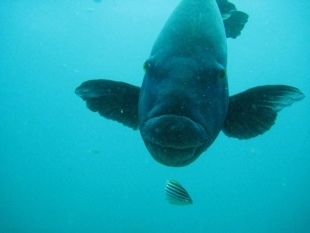
Blue groper (Achoerodus viridis). Photo: Renata Pronk.
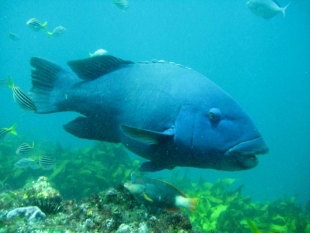
Blue groper (Achoerodus viridis). Photo: Renata Pronk.
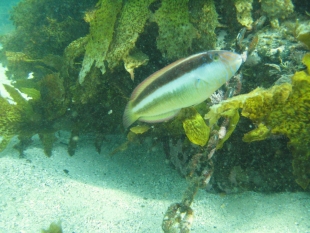
Maori wrasse (Ophthalmolepis lineolatus) Photo: Renata Pronk.
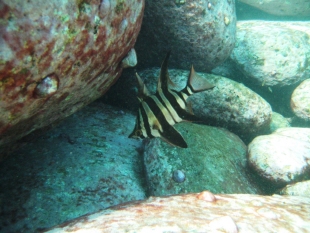
Old wives (Enoplosus armatus) Photo: Renata Pronk.
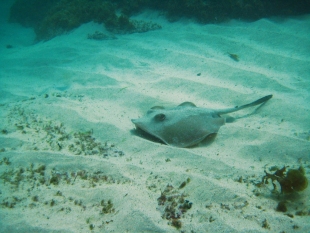
Stingray (Trygonoptera testacea). Photo: Renata Pronk.
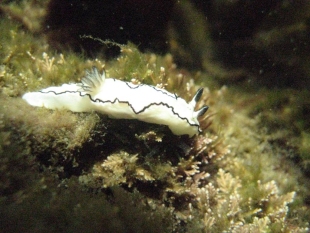
Nudibranch (Glossodoris atromarginata). Photo: Renata Pronk.
Getting there
You can get to the reserve through the beaches and bays, including Bronte Beach via Bronte Rd, Clovelly Bay and Gordons Bay accessed via Arden St or Clovelly Rd or Coogee Beach. Additionally, you can walk along the entire foreshore of the reserve on the Bondi to Coogee coastal walkway.
Further information
Please contact us at marine.environment@dpi.nsw.gov.au.

